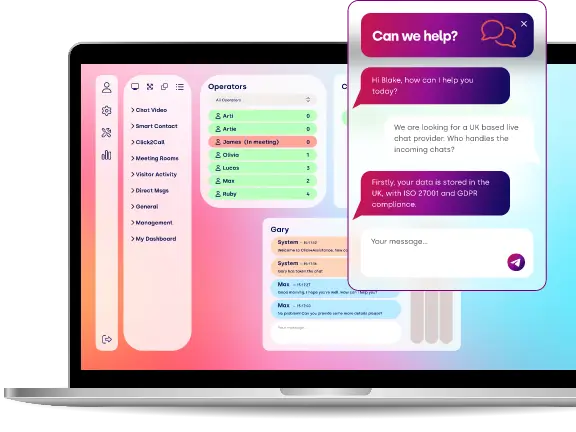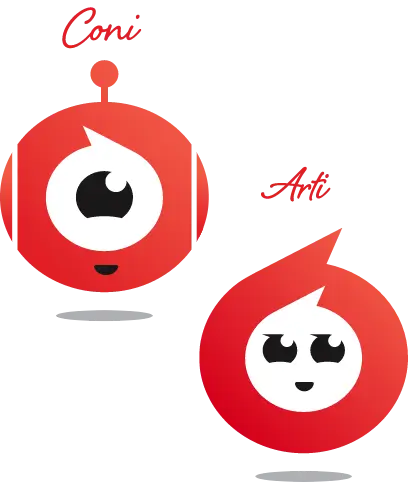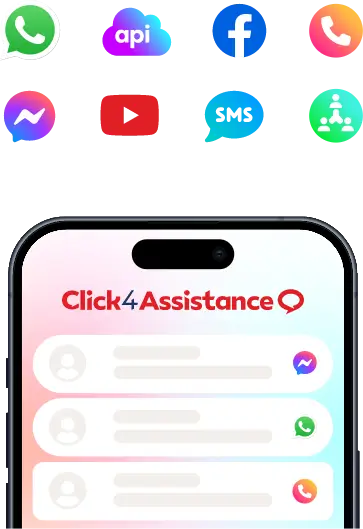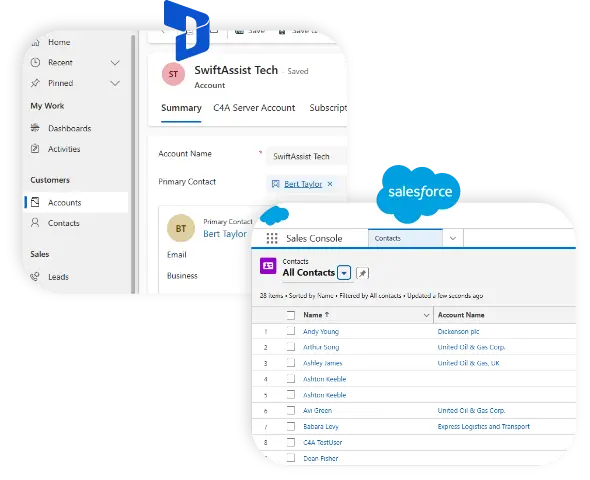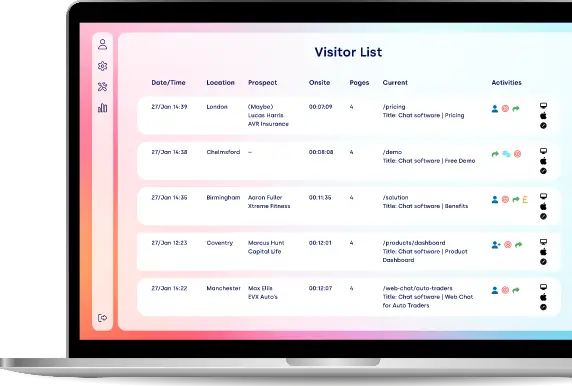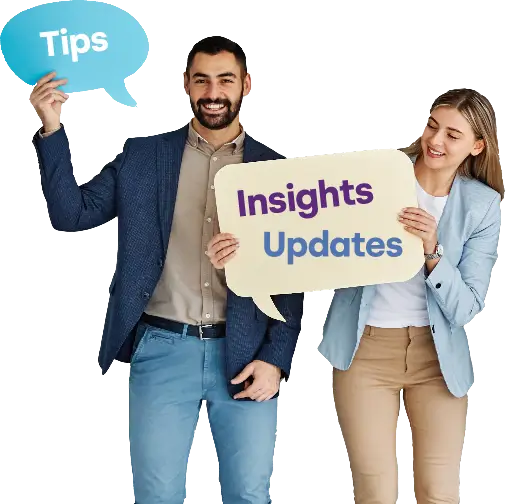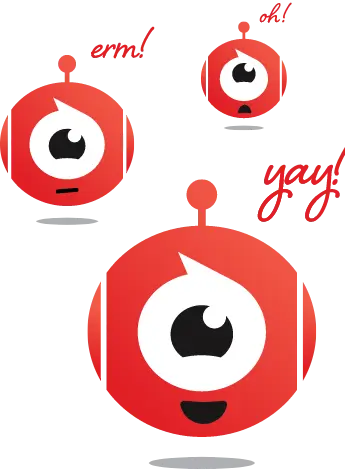WhatsApp for Business Integration: From Startup Idea to Global Messaging Giant
Boost customer satisfaction and drive conversions by tapping into WhatsApp’s rich media features, chatbots, and seamless CRM integration. Make communication easier and provide instant support.
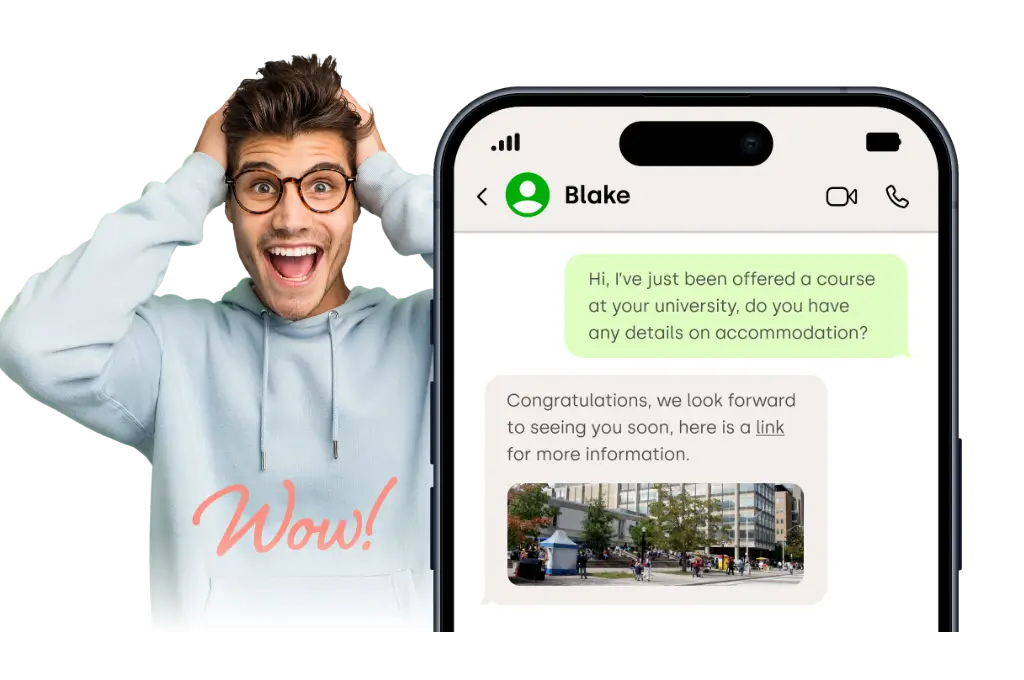
Transform the way your business connects with customers through WhatsApp for Business integration. With over 2.7 billion users worldwide and engagement rates far exceeding email or SMS, WhatsApp has become the preferred channel for support, sales, and personalised communication. From real-time messaging and automated workflows to secure, GDPR-compliant conversations, integrating WhatsApp into your customer service systems empowers UK businesses to deliver faster responses, stronger relationships, and measurable growth within a single, seamless platform.
Early Beginnings (2009)
WhatsApp was born in 2009, at the height of the smartphone revolution. Two former Yahoo! employees, Brian Acton and Jan Koum, had spent nearly a decade working at Yahoo before deciding to leave in 2007. Both were looking for a new project that could ride the wave of mobile innovation.
Koum, a Ukrainian immigrant who had moved to California as a teenager, bought an iPhone in 2009, and recognised the potential of the App Store. He envisioned a simple app that let people display statuses like “at work” or “battery low,” so friends and contacts could know what they were doing. That idea evolved into WhatsApp, named to play on the phrase “What’s up?”
The first version was launched on the iOS App Store in February 2009. Initially, it was not a messaging app in the sense we know today. Instead, it was a utility app for sharing short status updates with your contact list.
Transition to Messaging
The turning point came later in 2009, when Apple introduced push notifications. This allowed WhatsApp to notify users whenever a contact updated their status. Almost by accident, users began using the app to send short, instant messages, effectively turning WhatsApp into a chat tool.
Acton and Koum quickly recognised this behaviour and pivoted the app to focus on real-time messaging. They released WhatsApp 2.0 with a messaging feature, and downloads surged. By the end of 2009, WhatsApp had a small but fast-growing base of loyal users who valued its simplicity and freedom from ads.
Growth Through Simplicity
Unlike many startups, WhatsApp did not rely on aggressive marketing campaigns. Growth was largely word-of-mouth. People invited their friends and family because the app was lightweight, cross-platform, and avoided the clunky sign-ups or usernames required by other services. Instead, WhatsApp tied each account to a phone number, automatically pulling in the address book to find existing users.
This frictionless approach set WhatsApp apart from rivals like BlackBerry Messenger (BBM), which was restricted to BlackBerry devices, or SMS, which could be expensive at the time, depending on the service provider.
By 2011, WhatsApp had become one of the most downloaded apps across Europe, India, and Latin America. It was particularly popular in regions where SMS charges were high, making free or low-cost messaging a major draw.
The Rise to Global Dominance
By 2011, WhatsApp was handling around 1 billion messages per day. The number jumped to 10 billion per day in 2012 and 27 billion by mid-2013. The scale was staggering, and the company, which was still relatively small in terms of staff, had to invest heavily in infrastructure to keep up.
WhatsApp also expanded to Android, BlackBerry, and Windows Phone, ensuring its reach across virtually every smartphone platform.
The Facebook Acquistion (2014)
The pivotal moment in WhatsApp’s history came in February 2014, when Facebook announced it would acquire WhatsApp for $19 billion in cash and stock. At the time, it was one of the largest acquisitions in tech history.
Facebook’s CEO Mark Zuckerberg praised WhatsApp’s rapid growth and its alignment with Facebook’s mission to connect the world. For WhatsApp’s founders, the deal provided resources to scale further, while promising autonomy to stick with their principles of no ads and user privacy.
By then, WhatsApp had around 450 million monthly active users, with most of them using the app daily.
Security and Encryption
WhatsApp became a pioneer in messaging security. In 2014, shortly after the Facebook acquisition, the company partnered with Open Whisper Systems (creators of the Signal Protocol) to introduce end-to-end encryption.
By 2016, all WhatsApp chats, including messages, calls, photos, and videos, were end-to-end encrypted by default. This meant only the sender and recipient could read the content, not even WhatsApp itself.
The move cemented WhatsApp’s reputation as a secure platform, though it also attracted scrutiny from governments who argued that encryption hindered law enforcement investigations.
The Arrival of WhatsApp Web and Voice/Video Calls
In 2015, WhatsApp introduced WhatsApp Web, allowing users to sync chats between their phone and computer browsers. This made it more versatile for work and long conversations.
In the same year, WhatsApp added voice calling, followed by video calling in 2016. These features further reduced reliance on traditional telecom providers, especially for international calls.
WhatsApp for Business Integration (2018)
Recognising demand from small businesses, WhatsApp launched the WhatsApp Business app in 2018. It allowed companies to create business profiles, provide customer support, and send notifications.
Later, the WhatsApp Business API was introduced, enabling larger enterprises to integrate WhatsApp into CRM systems and customer service platforms. This was the foundation for WhatsApp’s growing role in commerce and customer engagement.
Controversies and Challenges
Despite its success, WhatsApp has faced controversies:
- Misinformation: In countries like India and Brazil, viral WhatsApp forwards were blamed for spreading false information and even inciting violence. The company responded by limiting the number of times a message could be forwarded.
- Privacy policy backlash (2021): An update to WhatsApp’s privacy terms led to confusion and sparked a user exodus to rivals like Signal and Telegram. Critics worried about increased data sharing with Facebook, though WhatsApp insisted private messages remained encrypted.
- Regulatory scrutiny: Governments around the world, including the UK, EU, and US, have questioned WhatsApp’s role in encryption, data privacy, and competition.
Current Status (2025)
As of 2025, WhatsApp has over 2.7 billion users worldwide, making it the most popular messaging app globally. It is deeply embedded in daily life across Europe, Latin America, Africa, and large parts of Asia.
The platform has also expanded into commerce and payments, with pilot projects in countries like India and Brazil allowing users to pay businesses directly within chats.
WhatsApp for Business Integration continues to grow, with small and medium-sized businesses using the app to communicate with customers. The API has become a key tool for enterprises in retail, banking, travel, and public services.
In short...
The history of WhatsApp is a story of simplicity, user focus, and global impact. What began as a small status-updating app in 2009 transformed into a messaging giant that reshaped how billions communicate daily.
From resisting ads and prioritising privacy to scaling under Facebook’s ownership, WhatsApp has left an indelible mark on modern communication. As it continues expanding into business messaging, commerce, and AI-driven customer service, WhatsApp’s journey is far from over.
Research: How consumers interact with WhatsApp in a business setting
Key takeaways regarding WhatsApp for Business integration
- WhatsApp is one of the world’s largest messaging platforms (+2.5 billion users), giving businesses enormous reach.
- Consumers strongly prefer messaging businesses over traditional channels , multiple studies put the figure between ~65% and 83% depending on the market and question framing.
- Engagement metrics for WhatsApp are far higher than email and SMS: published figures show open/read rates commonly cited in the 80–98% range and robust click/response rates when messages are personalised.
- Despite huge consumer demand, enterprise adoption of the WhatsApp Business API among medium/large firms remains relatively low, which represents an opportunity for early adopters.
- Reach & adoption: Why WhatsApp for business integration matters
WhatsApp’s global scale means that for many customers, contacting a business through WhatsApp is a familiar option. Recent industry data places WhatsApp’s user base in the multiple-billions range, with daily message volumes and time-on-app that dwarf most other channels. That translates to very high visibility for business messages: marketing and support content sent via WhatsApp is much more likely to be seen than the same content sent via email or SMS.
Business implication: Use WhatsApp for high-value customer journeys (order support, on-boarding), and personalised offers. These are the moments where high visibility drives measurable outcomes.
- WhatsApp for business integration: Consumer preference & purchase behaviour
Multiple surveys indicate consumers actively prefer messaging businesses for enquiries, purchases, and support. Depending on how the question is asked, 65% to 83% of consumers say they prefer messaging a business compared with calling or emailing. Importantly, messaging isn’t just for support, it drives commerce: some providers report that a large share of customers who use messaging to learn about products go on to purchase (figures reported up to ~75% in some industry studies).
Business implication: Position WhatsApp not only as a support channel but as a sales channel. Use to send product catalogues, and personalised promotions. These perform well because the user is already in a conversational context.
- WhatsApp for business integration: Engagement metrics (opens, reads, responses)
Published engagement numbers for WhatsApp typically show substantially higher open and read rates than email. Multiple industry sources cite open/read rates in the 80–98% range, and typical response rates (where measured) are also materially higher than email benchmarks. Click-through and conversion rates vary by use case, but when messages are personalised and timely, CTRs and conversions are frequently reported as strong.
Business implication: Track WhatsApp-specific KPIs (delivered, read, response time, CTR, conversion) and benchmark against email to demonstrate uplift. Small changes in message timing or personalisation often produce massive lifts because so many recipients actually open the message.
- WhatsApp for business integration: Response-time expectations & conversational norms
Messaging sets a different expectation than email. Consumers expect faster replies and often view messaging as near real-time. Automation such as chatbots, are accepted for routine requests (FAQs, tracking, confirmations), but customers still expect fast handover to a human for complex or sensitive issues. Research also shows users prefer conversational, concise, and clearly actionable messages (buttons, quick replies) rather than long blocks of text.
Business implication: Implement hybrid flows: chatbots for triage and quick answers, with smooth escalation to agents when needed. Publish clear availability times and expected SLAs in your WhatsApp channel info to set expectations.
- WhatsApp for business integration: Privacy, trust, and compliance concerns
While WhatsApp is end-to-end encrypted for personal chats, businesses using the WhatsApp Business API must design compliant processes for data handling, consent, and record-keeping (especially in the UK/EU under GDPR). High-profile regulatory and compliance incidents (e.g., misuse of WhatsApp in financial services) have made some sectors cautious; many organisations now require message archiving, consent capture, and secure hosting as part of integration.
Business implication: Choose a Solution Provider that supports UK data residency, (Click4Assistance is solely UK based) offers compliance features (archiving, audit logs), and includes explicit opt-in/opt-out flows for marketing messages.
- WhatsApp for business integration: Untapped opportunity: enterprise adoption lags demand
Industry analysis shows consumer demand is outpacing enterprise adoption of the WhatsApp Business API. One report estimated that, as of 2024, only a small fraction of medium and large businesses had adopted the API, even while message traffic was forecast to grow dramatically. This adoption gap represents a competitive advantage for businesses that integrate now: better reach, lower support costs, and higher conversion potential.
Business implication Being an early adopter in your industry can deliver measurable ROI: lower support volume, higher sales conversions, and stronger customer loyalty.
All Messaging Channels from One Platform
Handle all your customer interactions from live chat, WhatsApp and Facebook Messenger within one powerful platform.
WhatsApp for Business Integration: The Complete 2025 Guide
For UK organisations it is essential they are present on WhatsApp.
But having the WhatsApp Business app on one phone isn’t enough. To truly unlock WhatsApp’s potential, businesses need WhatsApp for Business integration: connecting the WhatsApp Business API into customer support software.
This guide gives you everything you need: what integration means, why it matters, research on how consumers actually use WhatsApp with businesses, practical use cases, compliance considerations, and a roadmap to get started.
What is WhatsApp for Business Integration?
At its core, WhatsApp for Business integration means connecting WhatsApp’s messaging power with the systems you already use. Instead of treating WhatsApp as a standalone app, integration ensures conversations flow into your customer support software and CRM for a 360 view.
Elements of integration include:
- WhatsApp Business API – enterprise-grade access enabling automation, chatbots, and multi-user management.
- CRM integration – log customer conversations directly in Salesforce or Microsoft Dynamics.
- Support platform connection – manage WhatsApp chats in Click4Assistance alongside SMS and live chat.
With the right setup, WhatsApp stops being ‘just another inbox’ and becomes a core business channel.
Why does WhatsApp Integration for UK Businesses Matter?
Meeting customer expectations
As discussed earlier, research consistently shows consumers prefer messaging businesses. Depending on survey wording, 65% to 83% of people say they’d rather message than call or email. In the UK, where WhatsApp penetration is among the highest in Europe, not offering this option risks frustrating customers.
Driving engagement
WhatsApp messages get seen. Industry benchmarks put open/read rates at 80–98%, far above typical email performance. That means delivery notifications, promotions, or support updates are almost guaranteed to reach the customer.
Building trust
WhatsApp is end-to-end encrypted, and many users see it as a safer option. Businesses that integrate correctly, with GDPR-compliant opt-ins and secure storage, can position WhatsApp as their most trusted support channel.
Unlocking efficiency
Automation and chatbots can handle high-volume queries (“Where is my order?”, “What are your opening hours?”), freeing human agents to focus on complex cases.
What are the benefits of WhatsApp for Business Integration?
- Streamlined customer journeys: customers don't need to switch between channels; conversations stay consistent.
- Personalised experiences: messages can be personalised from first name to past purchases.
- Revenue growth: cart recovery reminders, catalogue sharing, and limited time offers all perform strongly in WhatsApp.
- Faster resolution times: customers get answers in minutes, not days.
- Actionable analytics: measure open rates, response times, agent productivity, and campaign ROI.
How do Consumers interact with WhatsApp in a Business Setting?
Reach and adoption
WhatsApp has billions of users worldwide and tens of millions in the UK. This reach means almost every customer segment is already on the app.
Preferences
Studies show messaging beats calling: most consumers prefer a message thread where they can respond in their own time.
Engagement
WhatsApp’s open rates sit between 80% and 98%, with click-throughs and replies far outpacing email and SMS.
Privacy
In regulated industries, compliance matters. UK regulators have fined firms for improper WhatsApp use, so GDPR-compliant archiving is essential.
Opportunity
Despite strong demand, relatively few enterprises have fully adopted WhatsApp Business API. That gap is an opportunity for first implementers to gain advantage.
Top Use Cases for WhatsApp Integration
Retail & E-commerce
- Abandoned cart recovery messages (boosting conversions by up to 18%).
- Order confirmation and delivery notifications.
- Personalised promotions linked to browsing or purchase history.
Financial Services
- Secure transaction alerts and payment reminders.
- Loan or insurance application support.
- Fraud prevention: quick two-way verification of unusual transactions.
Travel & Hospitality
- Booking confirmations with rich media itineraries.
- 24/7 traveller support during trips.
- Upselling: room upgrades, excursions, or car hire suggestions.
Healthcare
- Appointment scheduling and reminders.
- Prescription collection updates.
- Secure Q&A for patients (within compliance rules).
Public Sector & Education
- Council service updates (e.g. bin collections, road closures).
- School announcements and parent communications.
- Community engagement for local initiatives.
Compliance and Data Privacy in the UK
UK businesses must design WhatsApp integration with compliance at the forefront of their minds:
- GDPR consent – opt-in required before sending marketing messages.
- Opt-out mechanisms – simple ways for customers to unsubscribe.
- Data residency – ensure storage in UK servers.
- Archiving & monitoring – especially critical in financial services.
Choose a Solution Provider that prioritises compliance in order to safeguard your reputation and legal position.
Case Studies & Examples
Retail brand
A UK clothing retailer integrated WhatsApp into Shopify. Abandoned cart recovery nudges lifted sales by 18% in three months.
Fintech startup
A London fintech integrated WhatsApp into their instant messaging provider. Customer resolution times fell 40%, cutting support costs significantly.
Local authority
A council piloted WhatsApp notifications for bin collections and service alerts. Call centre demand dropped 25%.
Coming Soon in WhatsApp for Business Integration
- AI chatbots delivering near-human conversations.
- Payments inside WhatsApp
- Omnichannel orchestration – WhatsApp alongside SMS and live chat.
Businesses that integrate now will be ready for these evolutions
Frequently Asked Questions (FAQs)
- Is WhatsApp for Business free?
The app is free; the API has usage-based fees.
- Do I need a developer?
Solution providers such as Click4Assistance provide no-code integrations; others may require development.
- Can I use my existing number?
Yes, you can often port a business number into WhatsApp.
- Is WhatsApp integration GDPR-compliant?
Yes if opt-in, consent management, and secure storage are implemented correctly.
How to Get Started with WhatsApp for Business Integration: A Step-by-Step Guide
For UK businesses, successful adoption of WhatsApp for Business integration is about designing a strategy that connects WhatsApp to your wider customer experience. Below is a practical roadmap that shows both the technical steps and the business planning needed to make the most of this powerful channel.
- Define Your Goals and Use Cases
Before diving into the technical setup, clarify what you want WhatsApp to achieve. Is it primarily for customer support, proactive marketing, lead generation, or a mix of all three? For example:
- A retailer may want to focus on upsell and order completion support.
- A local authority may use WhatsApp to channel shift from telephones.
- Financial services firm might prioritise customer verification.
Clear goals will shape how you configure the system, what automation you need, and how success will be measured.
- Choose a WhatsApp integration for Business Solution Provider
To access the WhatsApp Business API, most companies partner with an authorised solution provider. In the UK, choosing the right provider is critical so look for one that offers:
- UK-based data hosting to meet GDPR requirements.
- Integration options for CRMs like Salesforce or Microsoft Dynamics.
- Support for compliance features such as message archiving and consent capture. The solution provider acts as the bridge between WhatsApp’s infrastructure and your business systems, ensuring stability and scalability.
- Secure Your Business Number and Configure Message Templates
You’ll need a dedicated business phone number for WhatsApp. Your solution provider should be able to help you with that.
Once set, configure pre-approved message templates for common interactions (e.g. delivery updates, appointment reminders). WhatsApp requires businesses to submit these templates for approval to prevent spam and ensure quality.
- Map Customer Journeys and Connect Your Systems
Integration is most powerful when conversations flow seamlessly into your existing platforms. Connect WhatsApp to your customer support software such as Click4Assistance, and integrate with your CRM.
- Build Automation Flows and Chatbots
Automation is key to scaling WhatsApp effectively. Start small with FAQs and tracking requests, then expand to lead capture and personalised recommendations. Design conversational flows that feel natural and human. Importantly, always provide an easy handover to a live agent for complex or sensitive enquiries.
- Train Your Teams on Tone and Response Times
WhatsApp sets a different expectation than email, customers often anticipate near real-time responses. Train your support and sales teams to:
- Keep messages concise and conversational.
- Use personalisation (names, order history) effectively.
- Escalate to a human quickly if automation can’t resolve the issue.
This training ensures consistency in brand voice and prevents frustration from slow replies.
- Run a Pilot Project and Gather Feedback
Rather than rolling out to every department at once, launch a pilot with one or two use cases. Monitor performance, collect feedback from both customers and staff, and refine the flows before scaling.
- Test, Measure & Optimise
Finally, treat WhatsApp like any other performance channel. Measure key metrics such as:
- Open/read rates (often 80–98%).
- Response times (average handling time).
- Click-through and conversion rates from promotional campaigns.
- Customer satisfaction scores from post-chat surveys.
Regularly test message timing, templates, and automation flows to optimise performance and demonstrate ROI.
Conclusion
WhatsApp for Business integration is more than a trend, it’s a transformational way for UK businesses to engage customers. With billions of users worldwide, unmatched open rates, and strong consumer preference for messaging, WhatsApp has become the channel of choice.
By integrating WhatsApp with your live chat tools, you can deliver faster service, higher conversions, and better customer experiences. Add in compliance safeguards and automation, and WhatsApp becomes a growth engine.
Ready to take the next step? Speak with our WhatsApp integration specialists today.
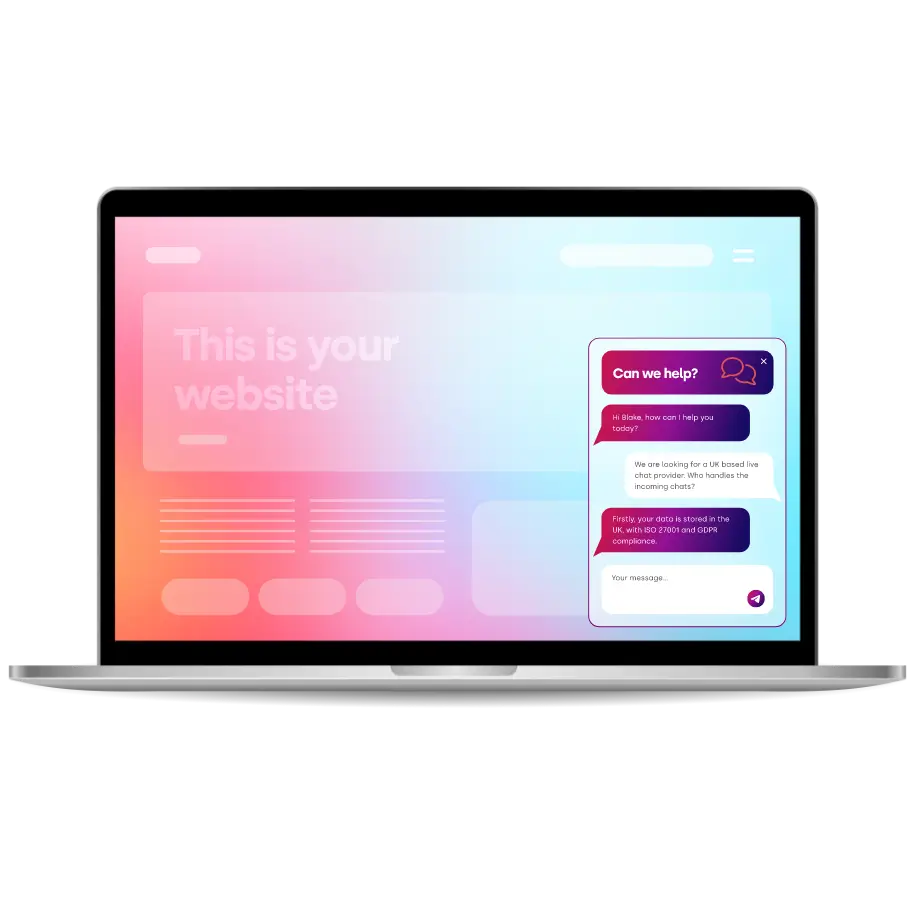
Thousands Trust Us. Will You?
From live chat to AI-powered chatbots and social integrations, Click4Assistance powers real-time engagement - fully UK hosted and trusted across industries.
